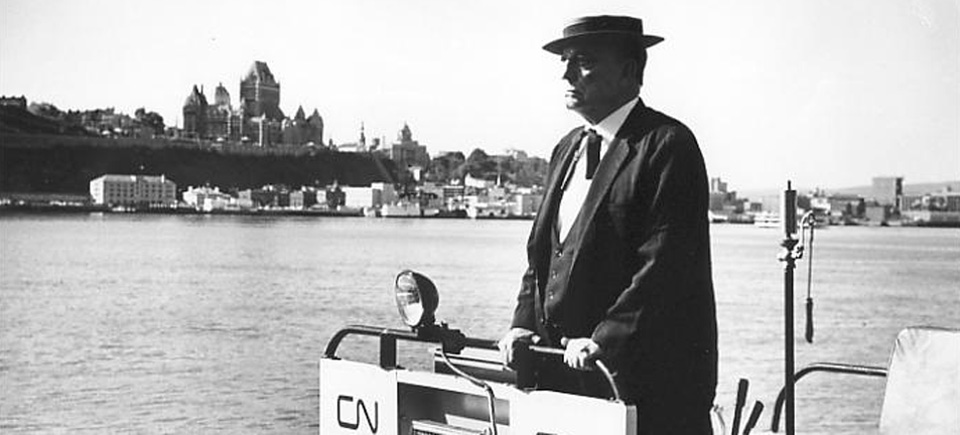
Buster Keaton rides the rails in Canada
Buster Keaton rides the rails in Canada
In September of 1964, Hollywood icon Buster Keaton arrived at Canada’s East Coast to start filming a 25-minute travelogue for the National Film Board. Produced with the full co-operation of the Canadian National Railroad, the film would see him travel from coast to coast on a railway-track speeder.
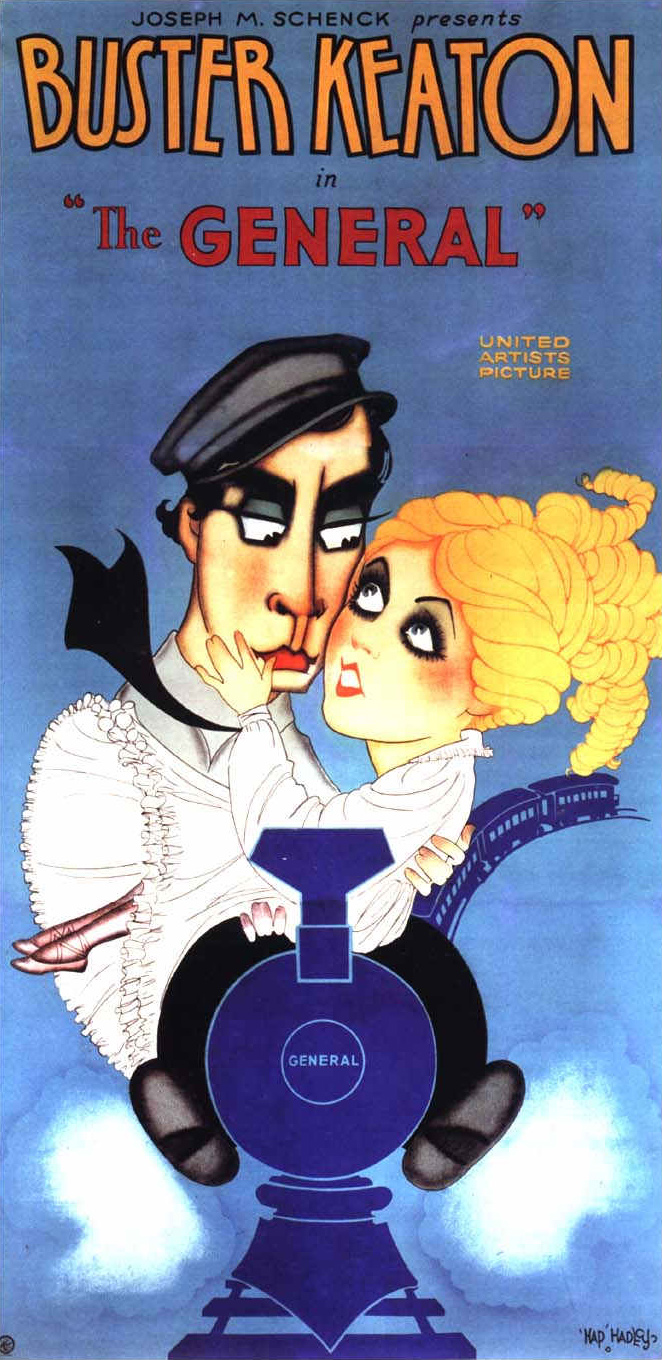 Keaton was a star of Hollywood’s silent era, directing and starring in dozens of short comedy films from 1917 onwards. He later moved to features, which were huge box office hits. These included his masterpiece The General where he got to “play” with real-life locomotives. All of Keaton’s films featured the actor performing incredibly complicated stunts, which were as astounding as they were hilarious. Following the advent of sound, his career took a turn for the worse, and he found himself starring in a string of mediocre films in which he had very little creative control.
Keaton was a star of Hollywood’s silent era, directing and starring in dozens of short comedy films from 1917 onwards. He later moved to features, which were huge box office hits. These included his masterpiece The General where he got to “play” with real-life locomotives. All of Keaton’s films featured the actor performing incredibly complicated stunts, which were as astounding as they were hilarious. Following the advent of sound, his career took a turn for the worse, and he found himself starring in a string of mediocre films in which he had very little creative control.
When television appeared in the 1950s, Keaton’s films were rediscovered by a new generation, and suddenly his career was back on track. In 1964, director Gerald Potterton was going to work at the NFB in Montreal when he saw a railway track speeder on the railroad tracks. He immediately thought of Keaton’s The General and wasted no time in contacting Keaton, who agreed to star in the NFB film simply because it was about his hobby, railroads, and he would get to ride the rails in Canada.
Shooting began on the 5th of September near Halifax, where Keaton was filmed coming out of the ocean onto dry land. This gag, while very funny, was tough on him, as the water was freezing cold. Potterton shot the film chronologically travelling from East to West. Most of the gags were improvised along the way with Keaton. The film was conceived as a colour travelogue short destined for the cinema screens of Canada and the world. Filming was done on 35 mm, but without sound. It was decided to shoot in the style of a silent film of old, complete with music and sound effects, but no dialogue. Potterton later said that the noise of the speeder and other trains would have made location dialogue shooting next to impossible. Interestingly, Potterton, who had mostly made animated films up to that time, wanted to shoot Keaton in live-action and add him to an all-animated film. Thankfully this idea was dropped in favour of an all live-action film.
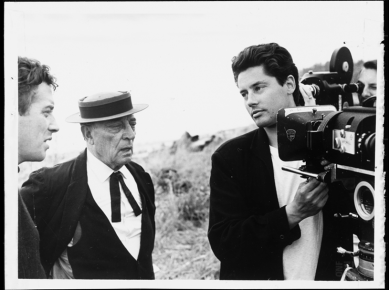
Shooting the film in Canada was extra special for Keaton, as he hadn’t visited the country in 48 years – since the time when he toured with his family’s vaudeville act prior to moving to Hollywood.
Accompanying Keaton on his Canadian assignment was his third wife Eleanor, who watched over him day and night. Keaton turned 69 during the production, but insisted on doing his own stunts. He would often work these out with Potterton the night before. They would be inspired by whatever the men happened to see along the way. The sequence with Keaton opening the impossibly large map while crossing over a railway trestle caused concern to all. Keaton insisted on doing this stunt himself much to the chagrin of Potterton and the crew. The pair and the film crew travelled throughout the country in a special railway car complete with a chef and steward.
A second film crew followed Keaton and made the one-hour documentary Buster Keaton Rides Again, a behind-the-scenes look at the making of the film. This documentary would be shown on Canadian television while The Railrodder was shown on the nation’s screens.
The filming took six weeks in all. The crew had to endure scheduled trains passing on the main line, which slowed down filming considerably, and cold temperatures. Keaton took it all in stride and would retire at the end of the day to watch the World Series on television in his railway car. The sequence that opens the film was shot in London with a stunt double. Keaton was later matted in.

Press coverage during the shoot was comprehensive. From coast to coast, newspapers sang the praises of Keaton. Some towns honoured him and his wife with film screenings and dinners throughout his journey in Canada.
The film was released theatrically by Columbia pictures in October 1965, playing with Gilles Carle’s La vie heureuse de Léopold Z in Quebec. In English Canada, it would play with a variety of Hollywood films. Reviews, unfortunately, were mixed. Most reviewers thought the film was too simplistic and not very funny. They felt it should have sacrificed the scenery for more Keaton.
The film was also distributed theatrically in the USA and throughout Europe, including the UK, Portugal, France, Belgium, Finland, Sweden and the USSR. Since there was no dialogue, it was very easy to sell in other language markets. It would also play on television around the world, notably in Italy, Argentina, Poland, Yugoslavia, Germany and South Africa. It enjoyed a second life on television in Canada and later on home video. Sadly Keaton would only work on a couple more films before passing away in February of 1966, just when The Railrodder was gracing the nation’s screens.
I never fail to smile when I see this film. Keaton is as spry as he was in his heyday. Some of the gags are hilarious. I especially enjoy Keaton stopping in the middle of the Prairies to enjoy his afternoon tea while a pack of bison looks on. The Railrodder remains the work of a comic genius, who could wring a laugh out of any prop on hand. As much as I admire Potterton for making it, the film is Keaton’s and will always remain his. May he forever ride the great railroad in the sky.
The Railrodder, Gerald Potterton, provided by the National Film Board of Canada
👉 For more about Buster Keaton and the NFB, read “A Tribute to Comedic Genius Buster Keaton.“
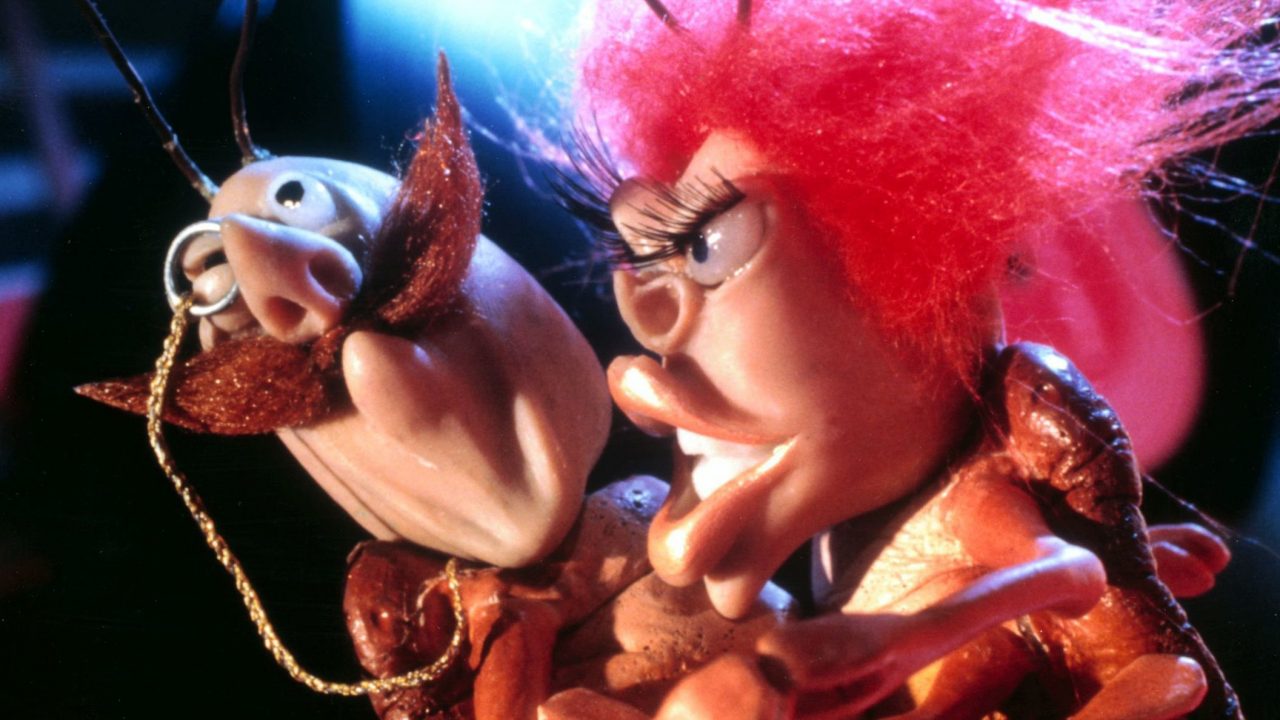
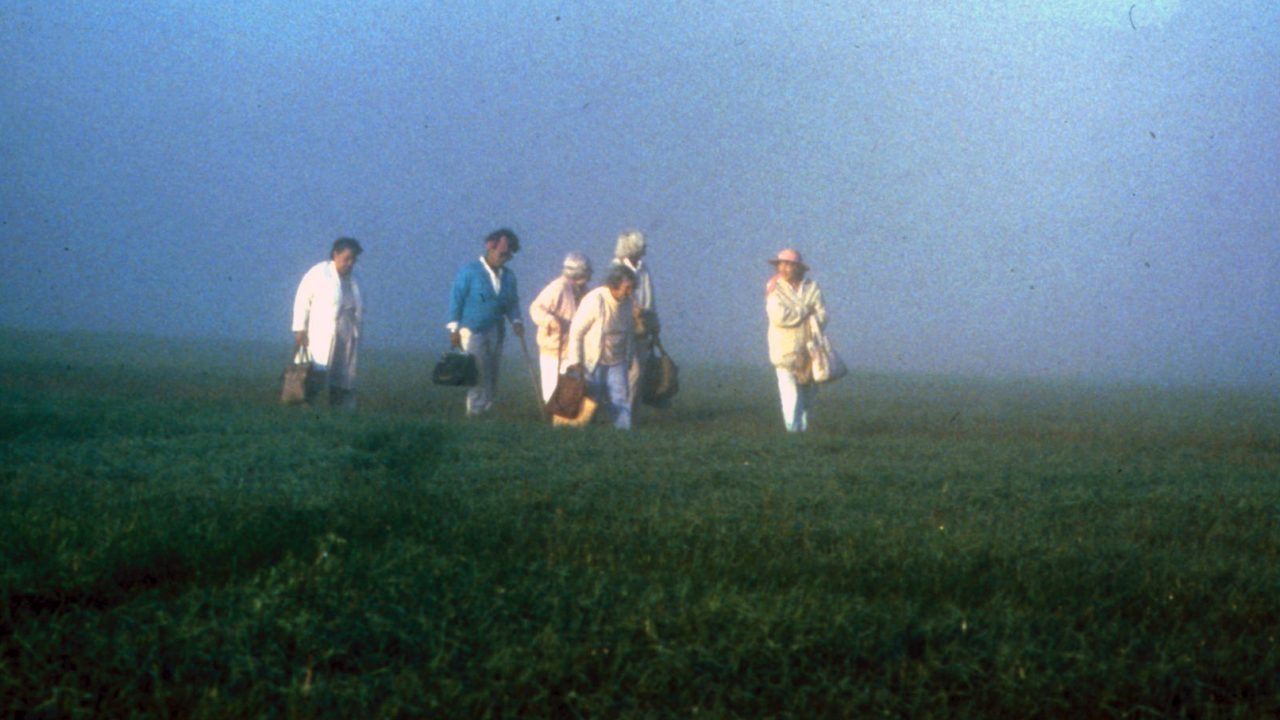
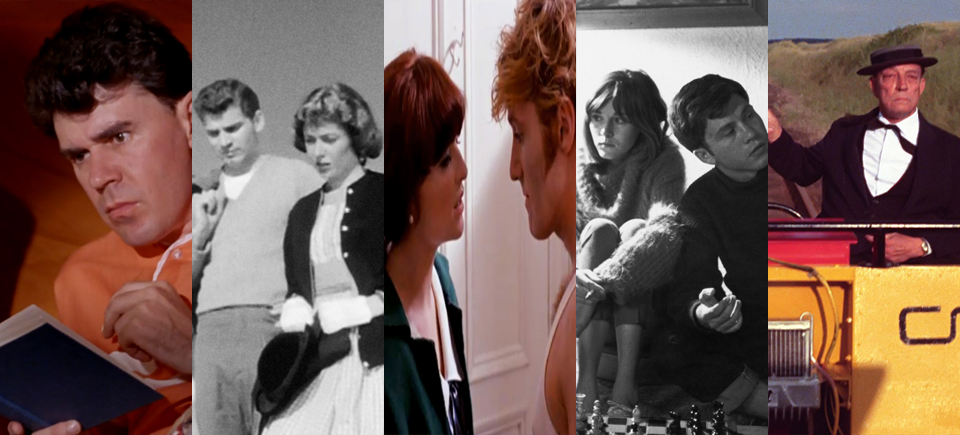

I may be mistaken but was this film not featured at the CN Pavilion at Expo 67 in Montreal during Canada’s Centenial year?
this is loved film from the loved master keaton.
the railrodder made me wonder for years about the nature
of film, the humanity travel through life, the scarcity
of meaning for life. within it the simplicity of a full comand: ‘visit canada now’ apart from the immense surprise thereafter made me dream about the country, the journey. today I watched with colours that the modern art museum in Rio de Janeiro in the late 80’s had faded… so dear to my heart of movies this is because it is a surrealistic sweetners. thanks also for the makingoff where buster tells teachs wisely that the gag is not on the high bridge is in the human act of misreading a map at high speed in the wrong place… thanks !
I used to watch this at the public library on Saturday afternoons back in the early 80’s. Good times!
I use to see this in Junior High Scool usually on a Friday when all we did was watch films
The film The Railrodder was shot in colour on 35mm. It was intended for the theatrical market so the choice of colour was important. The “making of” of this film entitled Buster Keaton Rides Again, was shot in Black and white for showing on Canadian television. Perhaps this is what you remember being in black and white. You can see Buster Keaton Rides Again on our site at this URL: http://www.nfb.ca/film/buster_keaton_rides_again
Albert Ohayon, NFB Collection curator
I first saw this film in black and white. Was it originally filmed in B&W and retouched in colour? Can anyone respond to this question? I was just curious because in the B&W version the effect made it seem so much older, like one of Buster’s silent films. Thanks
Wally,
I checked the production file for this film including the camera reports. I find nothing that indicates Eugene Boyko worked on this film.
Albert Ohayon, NFB collection curator
I believe that Eugene Boyko, also known as Jeep, was
involved as camera man on some of the Keaton shoot. Can anyone
confirm. Walden3@shaw.ca
“Potterton shot the film chronologically traveling from East to West.”
That’s not quite true. Some of the scenes representing eastern Canada (passing a railways station) were shot in central Alberta. I have a dvd copy of the film, and stepped through the scenes frame by frame. From about 9:33 to 11:00 it’s all Alberta. At 10:44 a railway station name board can be seen, which gives us a clue. It says: “Entrance”.
Canadian Northern Railways surveyed their railway line through this location in 1909 from Edmonton to Tete Jaun Cache with preliminary work having been undertaken three years earlier. A station or section house was situated every eight to ten miles along the railway.
Roy Woodley filed homestead on vacant land SW2-51-26-W5 at the location he called “Entrance” in 1913 and obtained government contract to operate Entrance Post Office which he ran from his general store, opened for business in 1914 and operated at this Entrance location until 1927. CNoR opened their railway station named ENTRANCE in 1914 providing rail service through to the near-by Brule coal mine, then onwards to the west coast port at Vancouver. Early railway plans indicate that their railway station at this location was to be called HEDA.
This location was known as Entrance due to the proximity to Jasper Forest Park, a vast forest reserve area laid out in 1907 with it’s north-west diagonal boundary line crossing the CNoR railway line a short distance west of Entrance near Orchard Creek. A portion of this forest reserve became Jasper National Park in 1909 and the Athabasca Forest Reserve was established north of the Athabasca River in 1912. Headquarters office for the Dominion Forest Service’s Athabasca Forest Reserve was maintained at Entrance from 1916 until 1930, at which time jurisdiction for forestry was turned over to the province of Alberta.
The CNoR station building at Entrance (Old Entrance) is still in existance today, also a log school house constructed in 1923 and the cabin home of James Shand-Harvey constructed in 1921 are still standing. The station building has been saved from destruction and it’s prominent features have been preserved. As a private residence and main house for Old Entrance Bed ‘n Breakfast Cabins the original railway station building is not generally accessible to the public. The building is visible from the old railway grade driveway.
I remember seeing this in the theatre in Toronto when it came out. Just impressions recalled now, but big laughs in places. To me at the time, Buster was just a funny man. We should all travel across the country, once in our lives!
Oh, that’s an original Canadian National Railway logo. Predated CNN by decades. Cheers.
I also liked the little abbreviated version of the CNN logo on the railway-track speeder thing he rides on.